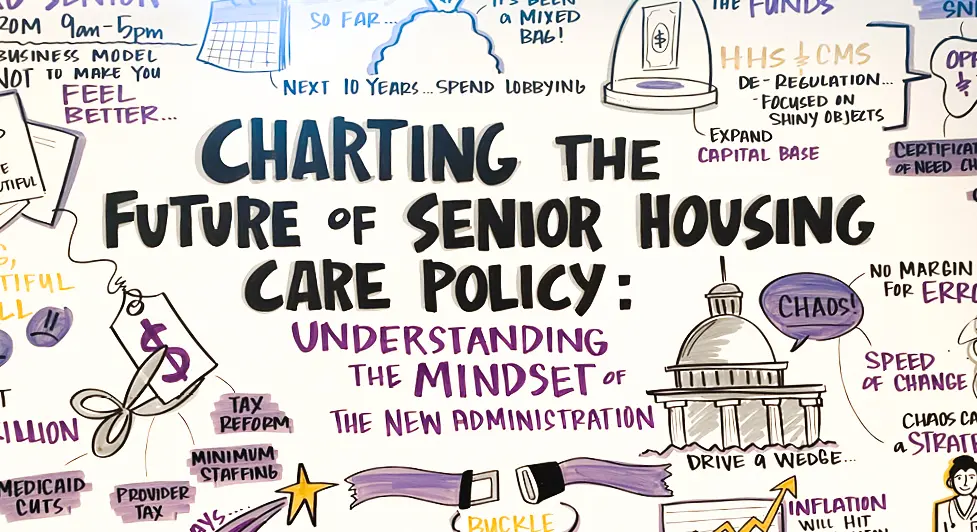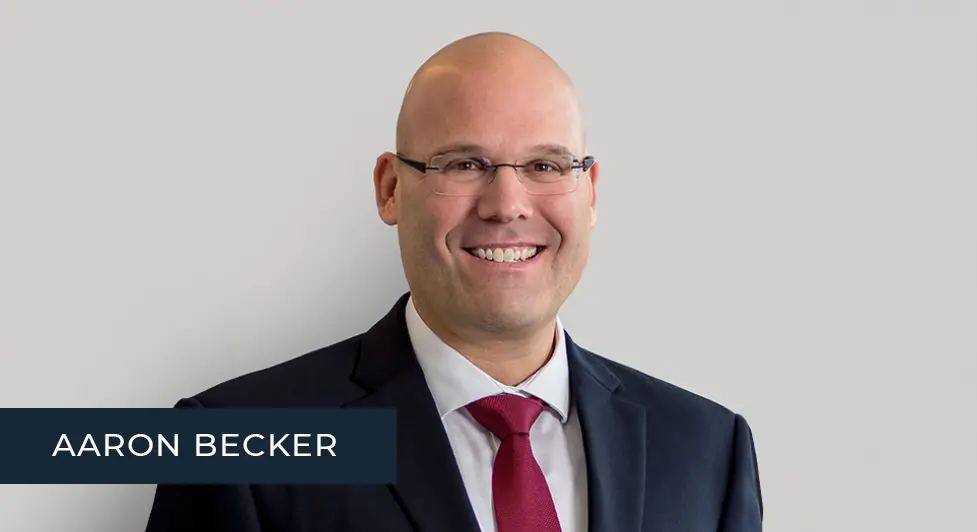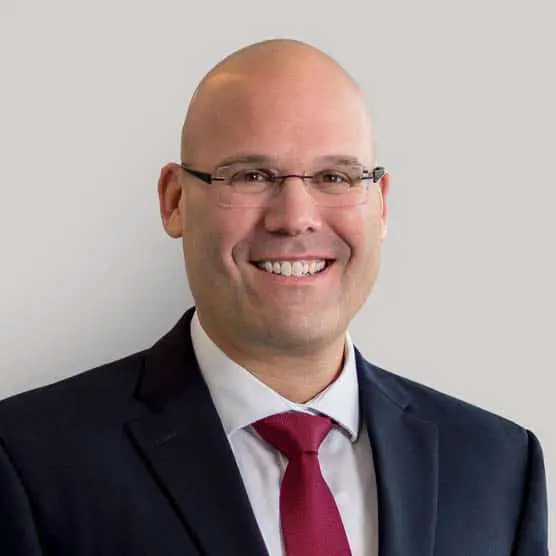Staying above the political fray has perhaps never been more challenging, and regarding the future of the seniors housing and care industry, perhaps it has never been so important. There is too much at stake in the coming years, from fighting for state dollars to facing potential Medicaid cuts, to lose focus. We must stay united as an industry and advocate for seniors housing and care at every turn. The time is now to be loud, persistent, strong supporters of initiatives and programs that benefit our industry. That sentiment was one of the central takeaways from the 2025 NIC Fall conference, where decision-makers met to discuss opportunities, threats, and challenges during this transformational time.
During the discussion titled “Charting the Future of Senior Housing & Care Policy: Understanding the Mindset of the New Administration,” speaker Brian Perry of Direct Supply detailed the latest developments out of D.C. from his perspective as a healthcare lobbyist. In an environment where chaos is a strategy, it can be difficult to keep up with the ever-changing developments to federal policies impacting the senior housing and care sector. Understanding the positive elements of legislation such as the One Big Beautiful Bill Act (OBBBA), as well as the threats and challenges therein, and staying on top of these fluid situations is key to maximizing business success in the years ahead.
Good News First
Starting on a positive note, Perry noted that the much-derided federal minimum staffing rule has been delayed for 10 years. While the belief is this will eventually be overturned permanently, at least the decade reprieve allows the industry to remove the issue from its crowded plate.
In addition, the OBBBA made the lower corporate tax rates previously set forth permanent, which should benefit organizations by providing certainty. Further, there are various tax credits, including around depreciation, that should free capital for investment.
As for healthcare, the U.S. Department of Health and Human Services (HHS) and Centers for Medicare and Medicaid Services (CMS) could both potentially lead the charge on re-regulation efforts to reduce red tape and make things easier for providers trying to deliver efficient care to seniors. Hopefully distractions such as government shutdowns will cease (maybe next year), and progress will accelerate on this front.
In terms of specific programs, Perry noted a $75 million workforce fund has been announced to help fund the training of nurses. In addition, a $50 billion Rural Health Transformation Program has been announced that could benefit not only rural hospitals but long-term care providers as well. The $50 billion is distributed over five years via grants from states. Providers who are using technology in a forward-thinking manner to benefit patients will be good candidates for the funds. In the meantime, contacting your state government and advocating for your organization to receive funds should commence immediately.
Medicaid Cuts
Any discussion of the negative aspects of the OBBBA begins with the $1.1 trillion cut from Medicaid and Affordable Care Act (ACA) marketplaces, according to Congressional Budget Office (CBO) estimates. Although some may feel safe assuming those cuts will be reversed in time due to their unpopularity, as of now they are scheduled to take effect over the next ten years. Perry pointed out only five times in U.S. history have we passed legislation that reached one trillion dollars. Now, that amount is scheduled to be cut in a move that some may view as draconian.
Ultimately, the responsibility for deciding how those cuts unfold will be bestowed to 50 state governors and legislatures. Operators need to work with their state nursing association to lobby and reduce cuts. In many states, the hospital associations are quite strong, so it is certain those organizations will be furiously lobbying to protect their members, and senior living needs to do the same. The Medicaid pie is going to shrink and expecting the same size proportion you are accustomed to is a risky strategy.

AL Waivers
State Medicaid waiver programs for assisted living (AL) have long served an important role helping eligible people get the care they need while providing operators with reimbursement dollars. It is important to note that it is an optional program, and as governors sit down to balance their state budgets and make difficult decisions, AL Medicaid waiver programs could be at risk. Once again, fighting to protect those dollars is key to ensuring our industry can care for AL waiver residents with the same quality we do today
Tariffs
With the fluidity of the tariff situation, it is a chaotic time to figure out how much things are going to cost, assemble, sell, transport, etc. Although we have not seen significant tariff-caused inflation yet, the potential remains. Goods providers may have been absorbing some of the cost to date, but if tariffs are higher across the board, costs will eventually increase. Planning accordingly while staying tuned into the latest developments is a prudent strategy.
Looking Forward
With tight congressional margins and midterm elections in sight, it is unlikely any additional major legislation will pass in the near term. For now, providers, developers, and capital providers should continue looking for elements of the OBBBA that they may benefit from, while preparing for any challenges impacting their plans. Many of the funding decisions will be made at the state level, so maintaining regular communication with your local government is paramount.
If you are interested in discussing financing strategies during this dynamic time, please contact us today.

